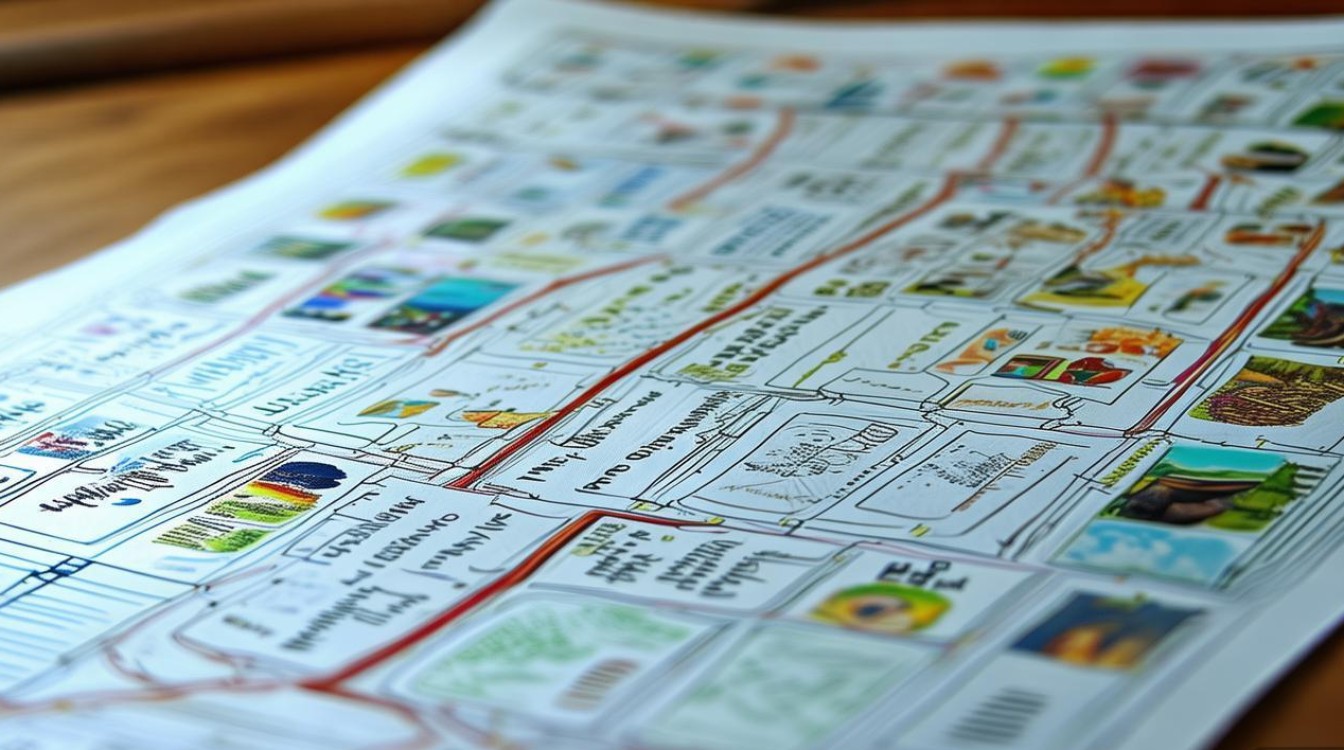人教版英语七年级下册 全册知识思维导图
中心主题:七年级下册英语知识体系
Unit 1: Can you play the guitar?
核心话题: 能力与俱乐部 核心问题: 询问并表达自己或他人的能力。

-
核心句型
- 询问能力:
Can you...?— Yes, I can. / No, I can't.Can he/she...?— Yes, he/she can. / No, he/she can't.
- 询问意愿与加入:
Want to join...?— Yes, I do. / No, I don't.Let's join...
- 提出建议:
What club do you want to join?I want to join... club.
- 询问能力:
-
核心词汇
- 能力动词:
sing,dance,swim,draw,speak,play,tell,write - 乐器:
guitar,piano,violin,drums - 俱乐部:
club,swimming club,chess club,art club,music club,English club,storytelling club - 其他:
story,show,kung fu,talk
- 能力动词:
-
核心语法
- 情态动词 Can 的用法:
- 构成:
主语 + can + 动词原形 - 否定形式:
主语 + can't/can not + 动词原形 - 疑问句:
Can + 主语 + 动词原形...? - 特点:
can没有人称和数的变化。
- 构成:
- 情态动词 Can 的用法:
Unit 2: What time do you go to school?
核心话题: 日常作息与时间安排 核心问题: 询问一天中不同时间点的活动。
-
核心句型
- 询问时间:
What time is it?— It's... o'clock.
- 询问作息:
What time do you...?— I... at...When do you...?— I... at...What time does he/she...?— He/She... at...
- 描述日常活动:
I usually/always/never...It's time for.../It's time to...
- 询问时间:
-
核心词汇
- 时间:
time,o'clock,half,quarter,minute,hour - 日常活动:
go to school,get up,run,eat breakfast,take a shower,go to work,go home,do homework,go to bed - 频度副词:
always(总是),usually(,often(经常),sometimes(有时),never(从不) - 其他:
best,job
- 时间:
-
核心语法
- what time 与 when 的区别:
what time指具体的时间点 (e.g., 7:00)。when指泛泛的时间 (e.g., in the morning, on Monday)。
- 一般现在时 (主语为第三人称单数):
- 肯定:
He/She + 动词-s/es(e.g.,gets up) - 否定:
He/She + doesn't + 动词原形(e.g.,doesn't get) - 疑问:
Does + he/she + 动词原形...?(e.g.,Does he get...?)
- 肯定:
- what time 与 when 的区别:
Unit 3: How do you get to school?
核心话题: 交通方式与距离 核心问题: 询问去某地的交通方式和距离。
-
核心句型
- 询问交通方式:
How do you get to...?— I take the subway / bus / train. / I walk. / I ride a bike.How does he/she get to...?— He/She takes the subway...
- 询问距离:
How far is it from... to...?— It's about... kilometers/miles.
- 询问花费时间:
How long does it take?— It takes about... minutes.
- 询问交通方式:
-
核心词汇
- 交通方式:
take the subway/bus/train/ship/plane,ride a bike/horse,walk,drive - 地点:
home,school,library,bus stop,train station,bus station,subway station - 距离与时间:
kilometer,mile,minute,hour - 其他:
cross,river,village,many,stop
- 交通方式:
-
核心语法
- How 引导的特殊疑问句:
How(方式) +do/does+ 主语 + 动词原形...?How far(距离) +is/are+ 主语...?How long(时间长度) +does it take...?
- 表示乘坐的动词短语:
take + a/the + 交通工具(e.g.,take the bus)ride + a + 交通工具(e.g.,ride a bike)walk(步行),drive(开车)
- How 引导的特殊疑问句:
Unit 4: Don't eat in class.
核心话题: 规则与建议 核心问题: 描述规则并提出建议。
-
核心句型
- 描述规则 (否定):
Don't + 动词原形...(e.g.,Don't eat in class.)You can't/mustn't...
- 描述规则 (肯定):
We must + 动词原形...(e.g.,We must be on time.)
- 询问规则:
What are the rules?Can we...?— Yes, we can. / No, we can't.
- 提出建议:
Let's...You should...
- 描述规则 (否定):
-
核心词汇
- 规则:
rule,classroom,hallway,dining hall,fight,sorry - 动词短语:
arrive late,listen to,in class,be on time,wear the uniform,eat outside,go out,clean - 情态动词:
must(必须),have to(不得不),can(可以),should(应该)
- 规则:
-
核心语法
- 祈使句:
- 否定:
Don't + 动词原形(e.g.,Don't run.) - 肯定:
动词原形(e.g.,Be quiet.)
- 否定:
- 情态动词
must/have to的用法:must表示主观上的“必须”,否定是mustn't(禁止)。have to表示客观上的“不得不”,否定是don't/doesn't have to(不必)。
- 情态动词
can/should的用法:can表能力或许可。should表建议,意为“应该”。
- 祈使句:
Unit 5: Why do you like pandas?
核心话题: 动物与偏好 核心问题: 描述动物并表达个人喜好及其原因。
-
核心句型
- 表达喜好:
Why do you like...?— Because they are...Why does he/she like...?— Because he/she thinks they are...What animals do you like?— I like... / I like... because...
- 描述动物:
Let's see the......are kind of shy/scary/beautiful/cute.
- 表达喜好:
-
核心词汇
- 动物:
panda,tiger,elephant,koala,lion,giraffe,animal,zoo,pet - 形容词:
cute,smart,ugly,clever,friendly,beautiful,scary,shy,lazy - 原因:
because,kind of,very - 其他:
south,Africa,get lost,water,grass,sleep,during,day,leaf
- 动物:
-
核心语法
- Why 引导的特殊疑问句:
Why + do/does + 主语 + 动词原形...?- 回答:
Because + 从句(e.g.,Because they are cute.)
- 形容词的用法: 用来修饰名词,描述人或物的性质和特征。
kind of的用法: 意为“有点儿”,相当于a little(e.g.,kind of shy=a little shy)。
- Why 引导的特殊疑问句:
Unit 6: I'm watching TV.
核心话题: 正在进行的动作 核心问题: 询问和描述此时此刻正在发生的事情。
-
核心句型
- 询问正在做什么:
What are you doing?— I'm watching TV.What is he/she doing?— He/She is reading.
- 描述场景:
This is Jenny. She's doing her homework.They are listening to a CD.
- 询问正在做什么:
-
核心词汇
- 动词:
watching TV,cleaning,reading,eating,exercising,swimming,shopping,sleeping,playing basketball - 地点/方位:
at home,in a supermarket,at the pool,in the library,outside,phone,camera,newspaper,soup,magazine - 其他:
just,now,wait
- 动词:
-
核心语法
- 现在进行时:
- 结构:
主语 + am/is/are + 动词-ing - 用法: 表示说话时正在进行的动作或当前一段时间内的活动。
- 现在分词的构成规则:
- 一般直接加
-ing(e.g.,do→doing) - 不发音的
e去e加-ing(e.g.,write→writing) - 重读闭音节结尾,双写末尾辅音字母再加
-ing(e.g.,run→running,swim→swimming) - 以
ie变ie为y再加-ing(e.g.,lie→lying)
- 一般直接加
- 结构:
- 现在进行时:
Unit 7: It's raining!
核心话题: 天气状况与感受 核心问题: 描述天气情况以及人们的活动。
-
核心句型
- 描述天气:
How's the weather?/What's the weather like?— It's sunny/rainy/windy/cloudy/snowy.
- 描述人们感受与活动:
How's it going?/How's everything going?— Great! / Not bad. / Terrible.What are you doing? I'm...
- 描述天气:
-
核心词汇
- 天气:
sunny,cloudy,rainy,windy,snowy,weather,hot,cool,warm,cold - 形容词:
bad,great,terrible,pretty,cold - 活动:
cooking,studying,playing basketball,watching TV,talking on the phone - 其他:
message,call,back
- 天气:
-
核心语法
- How's the weather? / What's the weather like? 的用法:
- 两者都用来询问天气,
How's the weather?更口语化。
- 两者都用来询问天气,
- It's + 形容词: 用来描述天气状况 (e.g.,
It's hot.)。 How's it going?的用法:- 用来询问近况,回答多种多样,如
Pretty good.,Not bad.,Terrible.等。
- 用来询问近况,回答多种多样,如
- How's the weather? / What's the weather like? 的用法:
Unit 8: Is there a post office near here?
核心话题: 地点与方位 核心问题: 询问并描述建筑物的位置。
-
核心句型
- 询问地点:
Where is the...?— It's on/in/next to/behind/between... and...Is there a... near here?— Yes, there is. / No, there isn't.
- 指路:
Go straight and turn left/right.It's down this street on the right/left.
- 询问地点:
-
核心词汇
- 地点名词:
post office,library,restaurant,bank,hospital,supermarket,street,avenue,pay phone,park - 方位介词:
on(在...上面),in(在...里面),next to(紧挨着),across from(在...对面),behind(在...后面),between(在...和...之间),near(在...附近),in front of(在...前面) - 动词:
enjoy,walk,take,visit,pass
- 地点名词:
-
核心语法
- There be 句型:
- 含义: “某地有某物”。
- 肯定句:
There is/are + 某物 + 地点.is+ 单数名词/不可数名词。are+ 复数名词。
- 否定句:
There isn't/aren't + 某物 + 地点. - 疑问句:
Is/Are there + 某物 + 地点?
- 方位介词的用法: 这是本单元的重点,需要结合图片或地图来理解和记忆具体位置关系。
- There be 句型:
Unit 9: What does he look like?
核心话题: 外貌描述 核心问题: 描述人的外貌特征。
-
核心句型
- 询问外貌:
What does he/she look like?— He/She is of medium height/build. / He/She has long straight hair.What do they look like?— They are short. / They have curly hair.
- 描述特征:
He/She has... (hair/eyes/glasses).He/She is... (height/build/age).
- 询问外貌:
-
核心词汇
- 身高:
tall,short,of medium height - 体型:
heavy,of medium build,thin,slim - 发型/发色:
long hair,short hair,curly hair,straight hair,long straight hair,short curly hair,brown hair,black hair,blonde hair - 面部特征:
round face,long face,glasses,eyes - 其他:
captain,team,kid,remember,artist
- 身高:
-
核心语法
look like与be的区别:What do you look like?询问的是外貌、体型等客观特征 (e.g.,tall,short,long hair)。What are you like?询问的是性格、人品等内在特征 (e.g.,friendly,funny)。
- 描述外貌的两种方式:
主语 + be + 形容词(e.g.,He is tall.)主语 + has/have + 名词(e.g.,He has glasses.)
- 注意:
has用于第三人称单数,have用于其他人称。
Unit 10: I'd like some noodles.
核心话题: 食物与点餐 核心问题: 在餐厅点餐并谈论食物。
-
核心句型
- 点餐:
I'd like...(I would like...) —What kind of noodles would you like?Can I help you?/What can I do for you?
- 询问食物:
What size bowl of noodles would you like?— I'd like a large/medium/small bowl.What's your special?
- 点餐:
-
核心词汇
- 食物:
noodles,beef,chicken,mutton,cabbage,potatoes,tomato,egg,rice,porridge,soup,juice,tea,dumpling,pancake - 形容词:
special,large,medium,small,size,drink,food,ice cream - 其他:
world,answer,make,order
- 食物:
-
核心语法
would like的用法:- 含义: “想要”,比
want更委婉、礼貌。 - 结构:
主语 + would like + sth. / to do sth. - 疑问句:
Would + 主语 + like...? - 回答:
Yes, please./No, thanks.
- 含义: “想要”,比
- 名词的可数与不可数:
- 可数名词:
noodle(通常用复数noodles),dumpling,pancake - 不可数名词:
beef,chicken,mutton,cabbage,rice,porridge,soup,juice
- 可数名词:
- 修饰不可数名词的数量:
a bowl of...,a glass of...,a cup of...,a bottle of...
Unit 11: How was your school trip?
核心话题: 过去的经历 核心问题: 谈论过去的活动及其感受。
-
核心句型
- 谈论过去的经历:
How was your school trip?— It was great / fantastic / boring.Did you go...?— Yes, I did. / No, I didn't.What did you do?— I went to the zoo. / I saw some animals.
- 谈论过去的经历:
-
核心词汇
- 动词过去式:
was,were,went,saw,visited,bought,ate,took,watched,read,sang,danced - 活动:
school trip,museum,fire station,zoo,park,aquarium,science museum,gift shop - 形容词:
interesting,boring,difficult,easy,big,small,fast,slow,happy,sad,great,terrible - 其他:
learn,about,sleep,beach,sun,yesterday
- 动词过去式:
-
核心语法
- 一般过去时:
- 含义: 表示过去某个时间发生的动作或存在的状态。
- 结构:
主语 + 动词的过去式 + 其他. - 动词过去式的变化规则: (需要重点记忆不规则变化)
- 规则变化: 一般加
-ed(e.g.,play→played),以e结尾加-d(e.g.,live→lived),辅音+y结尾变y为i再加-ed (e.g.,study→studied),重读闭音节双写末尾辅音再加-ed (e.g.,stop→stopped)。 - 不规则变化:
go→went,see→saw,do→did,have→had,eat→ate,take→took,buy→bought等。
- 规则变化: 一般加
- 一般过去时的疑问句和否定句:
- 疑问句:
Did + 主语 + 动词原形...? - 否定句:
主语 + didn't + 动词原形...
- 疑问句:
- 一般过去时:
Unit 12: What did you do last weekend?
核心话题: 过去周末的活动 核心问题: 详细描述过去某个特定时间(如上周末)的活动。
-
核心句型
- 谈论过去周末:
What did you do last weekend?— I played badminton on Saturday morning.Where did you go?— I went to the beach.Who did you go with?— I went with my friends.
- 描述连续的动作:
First, I... Then, I... Finally, I...
- 谈论过去周末:
-
核心词汇
- 动词过去式:
camped,climbed,studied,played,went,visited,watched,cleaned,played,stayed - 活动:
camp,beach,sleep,badminton,soccer,house,movie,museum,park,market - 时间副词:
last weekend,yesterday morning/afternoon/evening,the day before yesterday,ago - 其他:
fly,love,worry,laugh,movie
- 动词过去式:
-
核心语法
- 一般过去时的综合运用:
- 本单元是对 Unit 11 语法知识的巩固和深化,重点是询问和回答过去特定时间发生的一系列活动。
- 需要熟练掌握
What,Where,Who,When,How等引导的一般过去时的特殊疑问句。
- 不规则动词的强化记忆: 本单元出现了更多不规则动词,需要重点记忆和练习。
- 表示过去的时间状语:
last weekend,yesterday,... ago等,是判断使用一般过去时的重要标志。
- 一般过去时的综合运用:
如何使用这份思维导图?
- 预习: 每个单元开始前,先看一遍思维导图,了解本单元要学什么,做到心中有数。
- 课堂笔记: 在课堂上,可以将老师补充的重点、例句或你自己的疑问,记录在思维导图的相应分支上。
- 复习: 每个单元结束后,看着思维导图回忆知识点,遮住右边的部分,尝试自己说出左边的核心内容。
- 考前总复习: 在期末考试前,可以用全导图进行系统性回顾,查漏补缺。
希望这份详细的思维导图能帮助你更好地学习七年级下册的英语!











